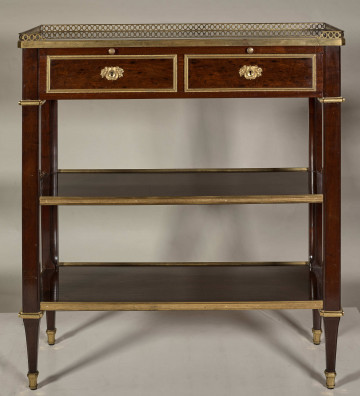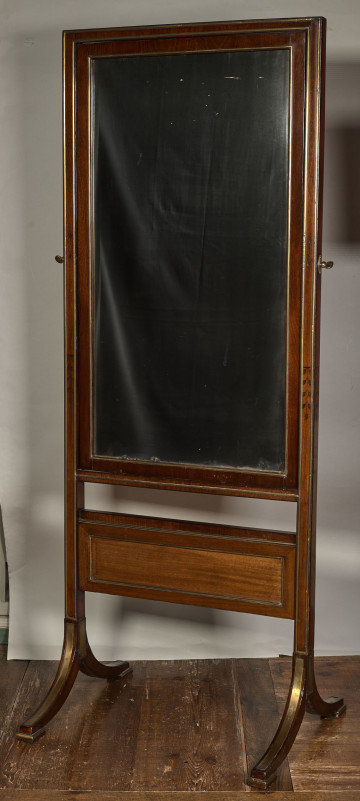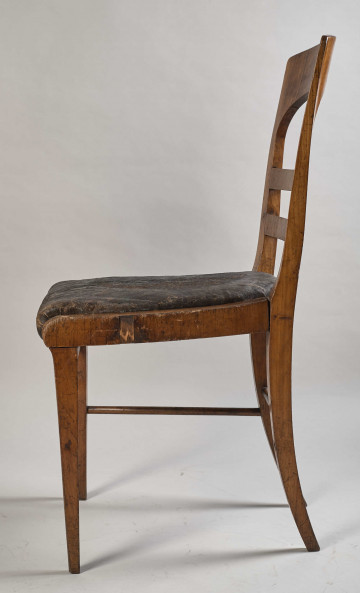
Cabinet / shelf
18th century
Castle Museum in Łańcut
Part of the collection: Furniture and interior furnishings
Empire side table Classicism marks the end of a period of universal styles in European art, distinguished by common features in architecture, fine arts and crafts. At the end of the 18th century, French Classicism took a simplified form known as the Directoire style, which was later on enriched under Napoleon Bonaparte with Roman antiquity and the art of ancient Egypt and transformed into the Empire style. English Classicism from the time of Robert Adam went in the direction of achieving greater clarity, lightness and finesse at the expense of simplifying forms. Around 1800, English Classicism, fuelled by discoveries at Pompeii and Herculaneum as well as archaeological finds in Tuscany, significantly influenced the way interiors were decorated in Europe. The furniture, modelled on images from Greek vases, became in a sort of a way the quintessence of ancient borrowings. This form of late Classicism was adapted in the Austro-German Biedermeier style and in the French restoration style after the Congress of Vienna in 1815 and became a permanent feature of the furniture making in the 19th century. The shape of this four-legged side table, close in style to the Empire models through the use of brass and ornamental casts in gilded bronze, reflects inspirations by the ancient Greek tripod or the handy table called ‘cilibantum’ used by Romans on a daily basis. Teresa Bagińska-Żurawska https://orcid.org/0000-0002-9243-3967
Author / creator
Object type
Furniture and interior fittings
Technique
carpentry
Material
brass, mahogany wood
Creation time / dating
Creation / finding place
Owner
Castle Museum in Łańcut
Identification number
Location / status

18th century
Castle Museum in Łańcut

18th-19th century
Castle Museum in Łańcut

19th (?) century
Castle Museum in Łańcut
DISCOVER this TOPIC
Museum of King Jan III's Palace at Wilanów
DISCOVER this PATH
Educational path